Lately I have been going up the Santa Catalina Mountains overlooking Tucson several times a week, often visiting the same trail two or three days in a row. This week it was the Palisades Trail, a trail that goes down to Sabino Canyon, a distance of about 14 miles. We walked just the first mile or so of trail. The lack of rain has also resulted in a lack of wildflowers. Walking along the trail we saw a few plants blooming here and there. Of greater interest was the magnificent views. These views have opened up quite a bit since the Bullock fire in 2002 and the even worse Aspen fire of 2003. At the time some people said it would take twenty years to restore the forest. Well, after 11 years there are some areas with saplings up to about six feet high and large patches without trees without any saplings at all. The land is dry and the trees are seriously stressed as can be seen from this photograph.
The dry slopes
The spires are at the top of the mountain
On our walk we came to a beautiful overlook point, enjoying the view and the cloud patterns. We sat beneath the largest silver leaf Oak I have ever seen. Nearby was a huge log of a fallen Ponderosa Pine, with a lizard scurrying up and down the now vertical roots. It seemed quite content to keep us company for quite a while.
The view looking West
Our lizard friend holding perfectly still
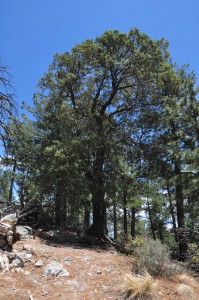
The Silverleaf Oak we sat under (Quercus hypoleucoides)
On the way back we came across the rarely seen Blue Lettuce. The botanical name tell us that it is a plant with milky sap (Lactuca) and grass-like leaves (graminifolia). In fact the leaves look so much like grass that it is virtually impossible to identify without the flowers. And the beautiful blue flowers open for a short time in the middle of the day. On our hikes we might miss seeing it on the outward journey, and then notice it on our return, probably because it was not open before. 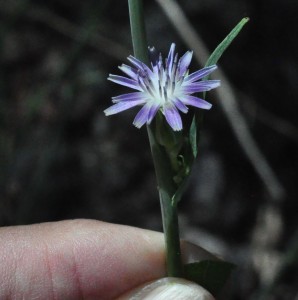
Blue lettuce flower
Driving down the mountain the Madrone trees were very noticeable. June is their fall. They are an evergreen species, but a large portion of their leaves turn bright red in June before letting go. You can see the difference in these two pictures.
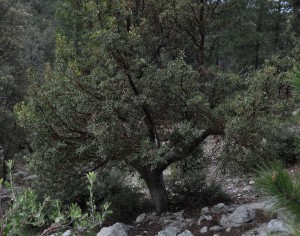
Madrone (Arbutus arizonica) in its normal green foliage
Arbutus with many of its leaves turned red in June
The monsoon season is due to start later this month. I am looking forward to seeing how the plants respond to our summer rains.

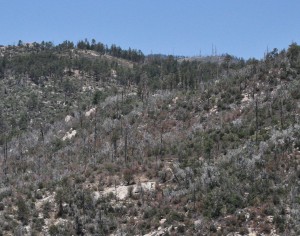

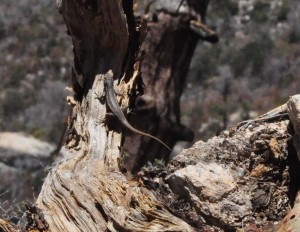

Thanks for sharing your views.